TechRadar Verdict
It is an expensive design that performs reasonably well but not anything like the price might suggest. If Kyocera wants a bigger slice of this market, it needs to be more price-sensitive and produce designs that aren’t carrier-aligned.
Pros
- +
Snapdragon SoC
- +
Replaceable battery
- +
FIPS 140-2 Level 1
Cons
- -
Exclusive to Verizon for 60 days
- -
Only 128GB storage
- -
Not a global design
Why you can trust TechRadar
30-second review
The Kyocera DuraForce Pro 3 that was sent to us for review came with the following hardware:
CPU: Qualcomm Snapdragon 7 Gen 1
GPU: Adreno 662
RAM: 6GB LPDDR4X
Storage: 128GB UFS 2.2
Screen: 5.38" OLED
Resolution: 1080 x 2160
SIM: eSIM, nanoSIM
Weight: 237g
Dimensions: 154.00 x 75.00 x 14.50 mm
Rugged Spec: IP65, IP68, MIL-STD-810H
Rear cameras: 64MP AF Sensor, 16MP Wide Angle, 2MP Macro
Front camera: 8MP Sensor
Networking: WiFi 6E, Bluetooth 5.2
OS: Android 13
Battery: 4270mAh, 8.1W wireless charging. 27W charging.
If you don’t live in the USA or in a region of that country that isn’t well supported by Verizon, then find something else to read. Because the Kyocera DuraForce Pro 3 is exclusive to that carrier and its mobile service, at least initially.
Or rather, it is glued to Verizon for 60 days, after which they will unlock it. But, it still only supports the 5G frequencies used in the USA, so global customers need to look elsewhere.
What US buyers get is a phone that complies with Verizon’s Private 5G network and is promised to work with 5G standalone that’s not dependent on legacy 4G LTE.
What the Kyocera DuraForce Pro 3 offers is a Japanese-made phone with a Snapdragon 7 Gen 1 SoC and an OLED screen, all packaged in a tough exterior designed to handle being dropped 5ft onto concrete and IP65 and IP68 protected against dust and water.
To be crystal clear, those IP ratings mean it is dust-tight, and the waterproofing is good enough for 6.5 ft for up to 30 minutes. We’d still not intentionally take it for a dip, whatever Kyocera infers.
The major selling points are that for a rugged phone, it is lightweight and makes up for having limited battery capacity by having removable batteries. And it also sports a security cryptographic module that is rated to FIPS 140-2 compliance.
It also has a very bright OLED display and decent quality, but the cameras don’t have the best sensors compared to premium phones.
Sign up to the TechRadar Pro newsletter to get all the top news, opinion, features and guidance your business needs to succeed!
For this model, Kyocera would like $899 out of contract or a long-term contract where a reduced cost on the phone is part of the equation.
Given the wealth of rugged phones with higher specifications that sell for much less and that can be bought without being locked to a carrier, the Kyocera DuraForce Pro 3 will likely only interest those in the USA who already have a business relationship with Verizon.
The regional limitations of this design are a disappointment because a global version of this design with a more realistic price might have been popular in Europe and elsewhere.
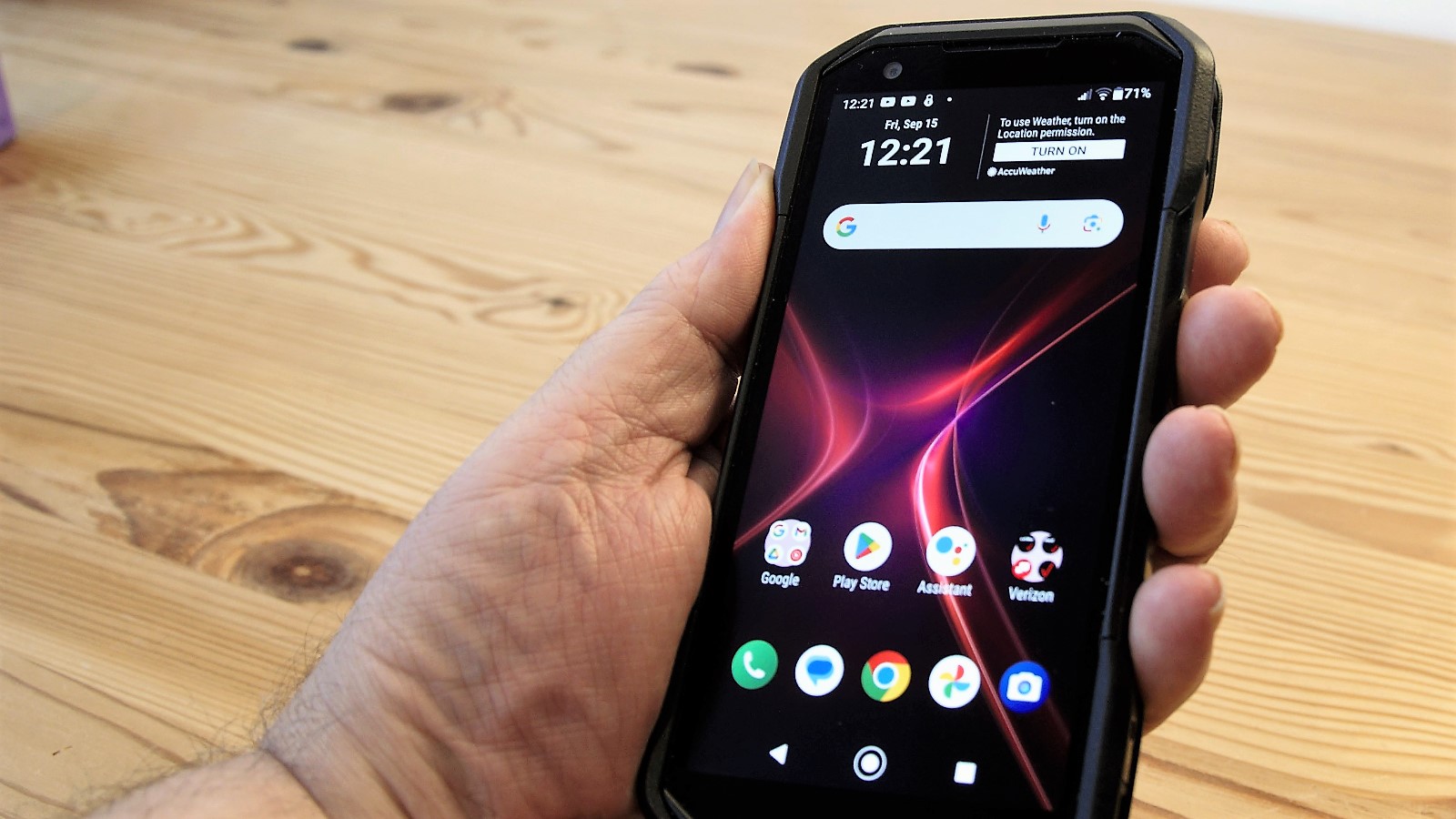
Kyocera DuraForce Pro 3: price and availability
- How much does it cost? $899
- When is it out? Now
- Where can you get it? Direct from Kyocera or through Verizon
This phone can be bought without a contract, but it is locked to Verizon initially. Contract deals give the purchaser the impression they got a good deal on the phone, but that’s largely an illusion. Whatever way you go, this phone will be locked to Verizon for a minimum of 60 days, and that’s the only way you can get it.
As Verizon is a US-based operation, and the phone is tailored to American frequencies and services, there is little point in anyone outside that region buying this phone.

- Value score: 2/5
Kyocera DuraForce Pro 3: design
- Small for a rugged design
- Nano and eSIM
- Swappable battery
Most rugged phones are huge and heavy, but the Pro 3 is much more like a conventional phone with go-anywhere styling.
The screen is just 5.38 inches, and the device weighs a paltry 237g, making it feel very like an ordinary phone that fits in an average pocket.
What’s not typical is the button layout, which is far from the norm.
The generally accepted pattern is to have the power button and volume controls on the right and any custom buttons on the left. The Pro 3 does have the power button on the right that also doubles as a fingerprint reader, but below that is one of two special buttons, and one is customisable.
The volume rocker is strangely on the left, in probably the worst possible location for a right-handed person, and near that is a PTT (push-to-talk) key. For anyone used to most phone layouts, this is going to be extremely confusing to begin with.
There is also a third special button that is designated as the SOS Key that is on the top right edge, though this can be set to any function other than only calling for help.
The bottom edge has a rubber plug that protects the USB-C port from liquids and dust, making it necessary to remove this to charge using the provided charger. The phone is Qi wireless charging compliant, which might be a good way to avoid compromising the waterproofing through wear and tear.
Access to the battery and SIM compartment is via a removable panel on the back that unlocks with a slotted threaded bolt that can be rotated with a coin or screwdriver.
Once the back is removed, an orange sliding catch releases the battery, covering the SIM and MicroSD card tray.
The tray only holds a single Nano SIM and a MicroSD card, but the phone supports eSIM for those who need home and business numbers in a single phone.

A nice touch is that the orange catch needs to be re-engaged for the cover to go back on, so you can’t reassemble it with the battery loose.
What’s good about this design is that wireless and cradle charging via Pogo Pins is included. And lanyard attachment points that Kyocera calls “Tool Anchors” are at each corner, though these are covered up if you use the belt bracket that was included with our phone.
Overall, besides the odd placement of the volume rocker and fingerprint reader on the left side, this design offers some exciting possibilities.

Design score: 4/5
Kyocera DuraForce Pro 3:hardware
- Powerful platform
- Only 128GB of storage
We’ve tested a few rugged designs that used Qualcomm Snapdragon chips, and they always deliver something more impressive than the typical MediaTek Helio G-series silicon.
However, the SoC Motorola used on its recent ThinkPhone design was the Snapdragon 8+ Gen 1, and Kyocera chose instead the less powerful Snapdragon 7 Gen 1.
The Snapdragon 7 Gen 1, aka SM7450-AB, first appeared in 2022 and was fabricated using the 4nm Samsung 4LPE fabrication. It sports a single 2.4GHz Kyro Prime core, three 2.46GHz Kyro Gold cores and four 1.8GHz Kyro Silver. This core mix gives it a nice blend of power and efficiency.
However, it’s about half the performance of the 8+ Gen 1 and much closer to the MediaTek Dimensity 1080, a chip that we’ve seen in $300 phones.
This chip has now been superseded by the 7+ Gen 2 variant that offers faster-clocked cores and a better Adreno 725 GPU.
The silicon used in the Pro 3 has so far appeared in only a few phones, most notably the Honor 90 and Xiaomi 13 Lite, both these being much cheaper than the Kyocera phone.
There are plenty of good reasons why this platform is ideal for this phone, but what is less than perfect considering the price is that it has only 6GB of RAM and 128GB of storage in this installation. This SoC can support at least 12GB of RAM and 512GB of storage, making the amounts in this design seem entirely fiscally motivated.
An argument could be made for power efficiency for the RAM, but that doesn’t extend to the storage, and the price of NAND modules is pitifully low at the time of writing.

Where Kyocera appear less frugal is with the excellent OLED display, protected using Gorilla Glass Victus with a resolution of 1080 x 2160 pixels and the ability to sense touch commands through a glove or when it is wet.
While the screen surface is glossy and not ideal for reading the display outdoors, but the colour representation is terrific.
Also, a strong point is the full WiFi 6E support, that the USB port is 5Gbit/s 3.2 Gen 1, and that for some Verizon customers, 5G is available.

- Hardware score: 4/5
Kyocera DuraForce Pro 3: cameras
- 64MP sensor on the rear
- 16MP on the front
- 4K video recording
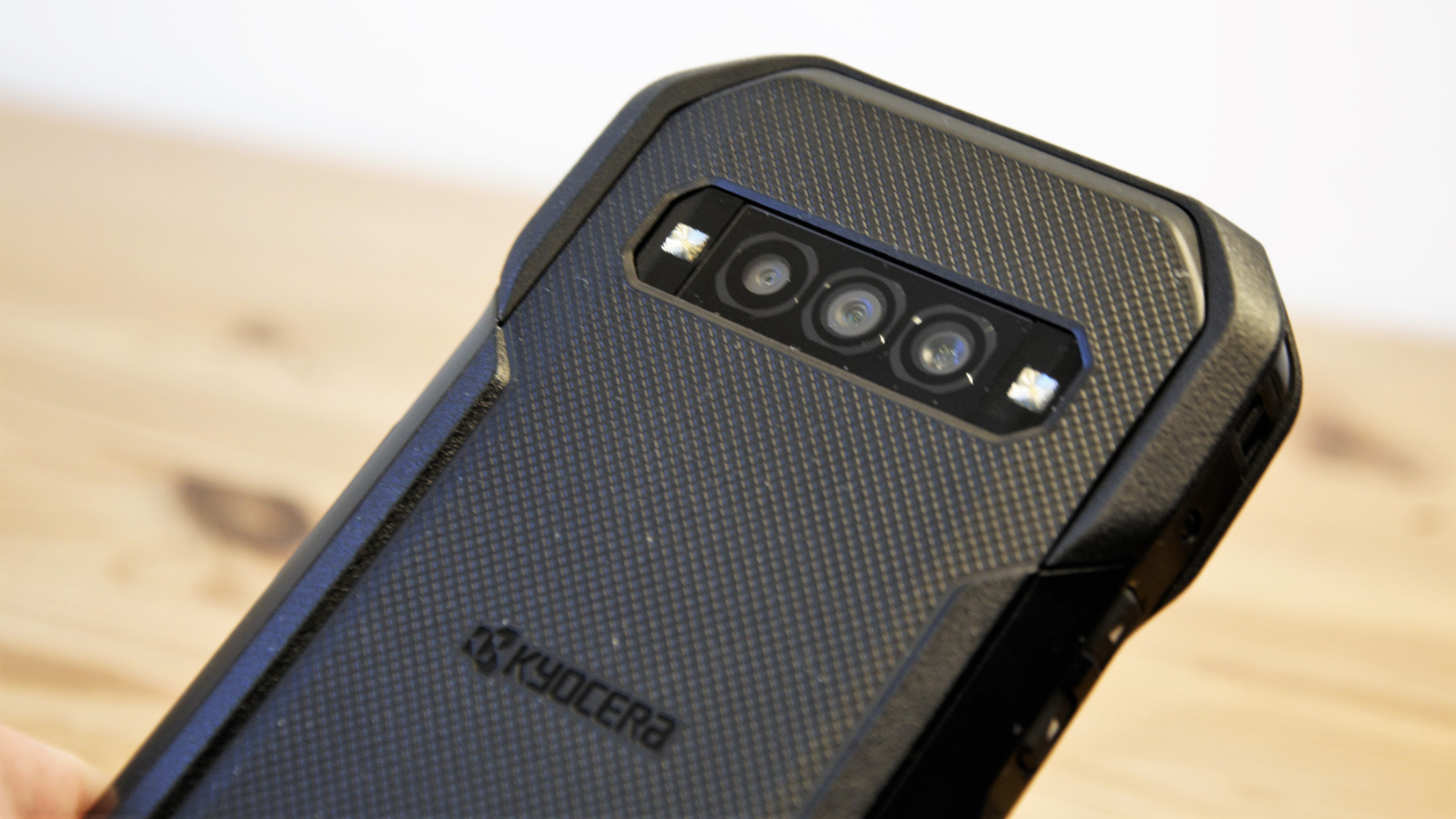
The Kyocera DuraForce Pro 3 has four cameras:
- Rear camera: 64 MP (4C 16MP), 16MP Wide Angle, 2MP Macro
Front camera: 8MP
It isn't very helpful when phone makers won’t say what sensors are in a phone and provide no other details than the resolution they theoretically have.
What we do know about the main 64MP sensor is that it takes 16MP images using quad pixel-binning and that the optics are rated at f/1.8. It is either a Sony IMX686 or an OmniVision ov64b. And as the wide angle is another OmniVision sensor, the ov16a, as is the ov020b macro, it would seem plausible that they’re all OmniVision.
That collection also includes the front 8MP sensor, an OmniVision ov08d.
What slightly messes up the rear sensors is that instead of placing them close together, they are organised in a line, making using them in combination impossible since they all have slightly different angles on the scene.
Early testers of this phone complained of having slow image capture, but we didn’t experience that issue in our review hardware.
What we did notice is that on the macro and wide-angle shots, the quality of the images is sub-par. Macro results are particularly poor.
The primary sensor delivers better results, but they’re not up to the quality you might get from the latest Apple iPhone or Samsung Galaxy.
As Android rugged designs go, the best aspect of this camera package is that the full capability of the main sensor is exploited by the camera app.
Special modes include macro, panorama, slow motion, time-lapse, action overlay and underwater, to mention just a few.
I'm not sure we’d try to use this expensive phone for underwater photography, but it’s listed as an option.
Slow motion is up to 240fps, and it can do 4K video capture at 30fps. There are also Pro modes where full control over the camera features is possible.
The issue here for Kyocera is that the likes of Doogee, AGM and Blackview are making rugged designs with 108MP main sensors that can capture 4K video for under $400, less than half the cost of this device.
Therefore, like the RAM and storage, the Pro 3 seems underwhelming in this camera specification when matched against the cost.
The only redeeming aspect is that Kyocera did pay for Widevine L1 encryption, so the Pro 3 can get the best quality video streamed to the screen from Netflix and Disney+.
Kyocera DuraForce Pro 3 Camera samples

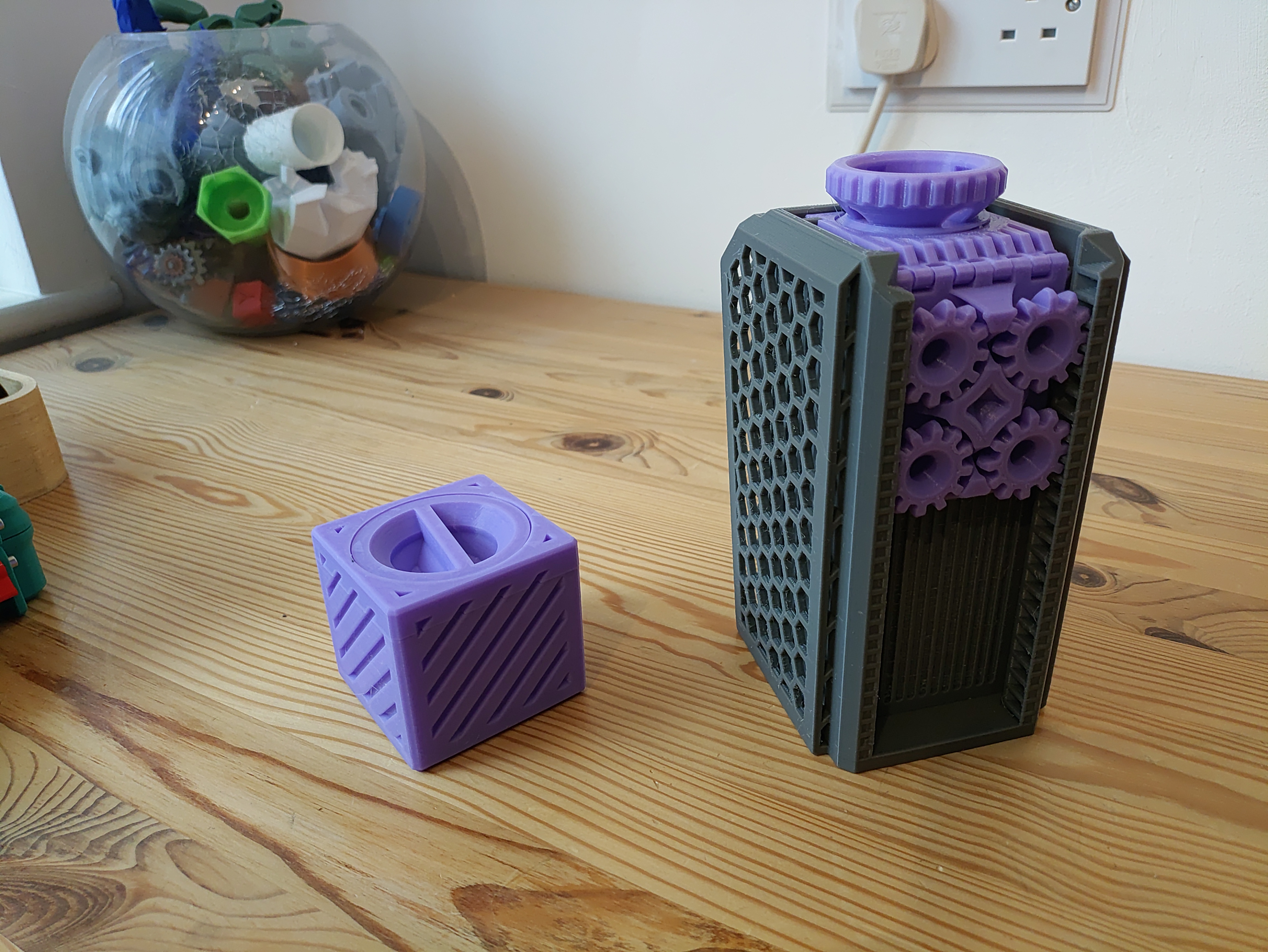
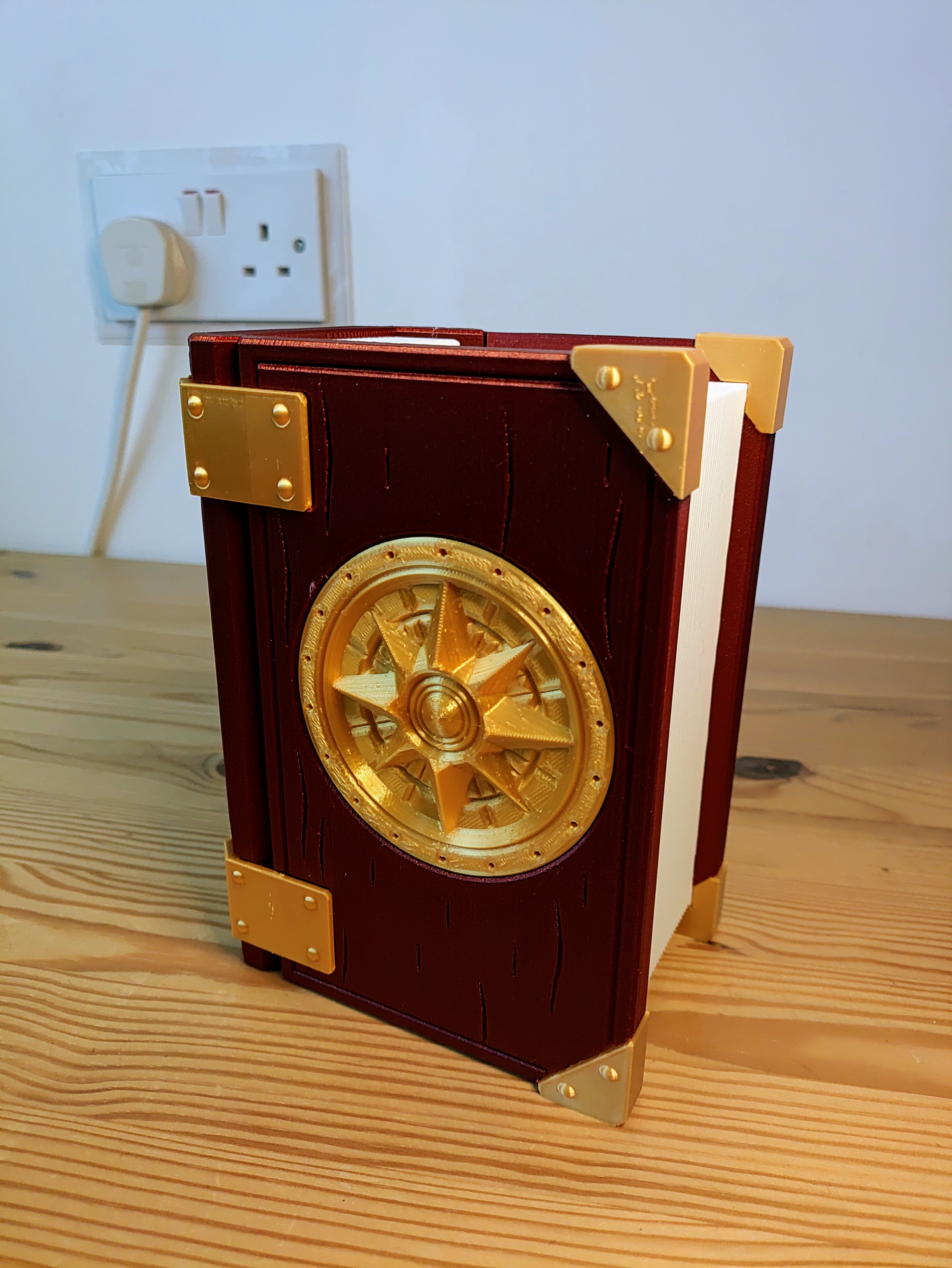




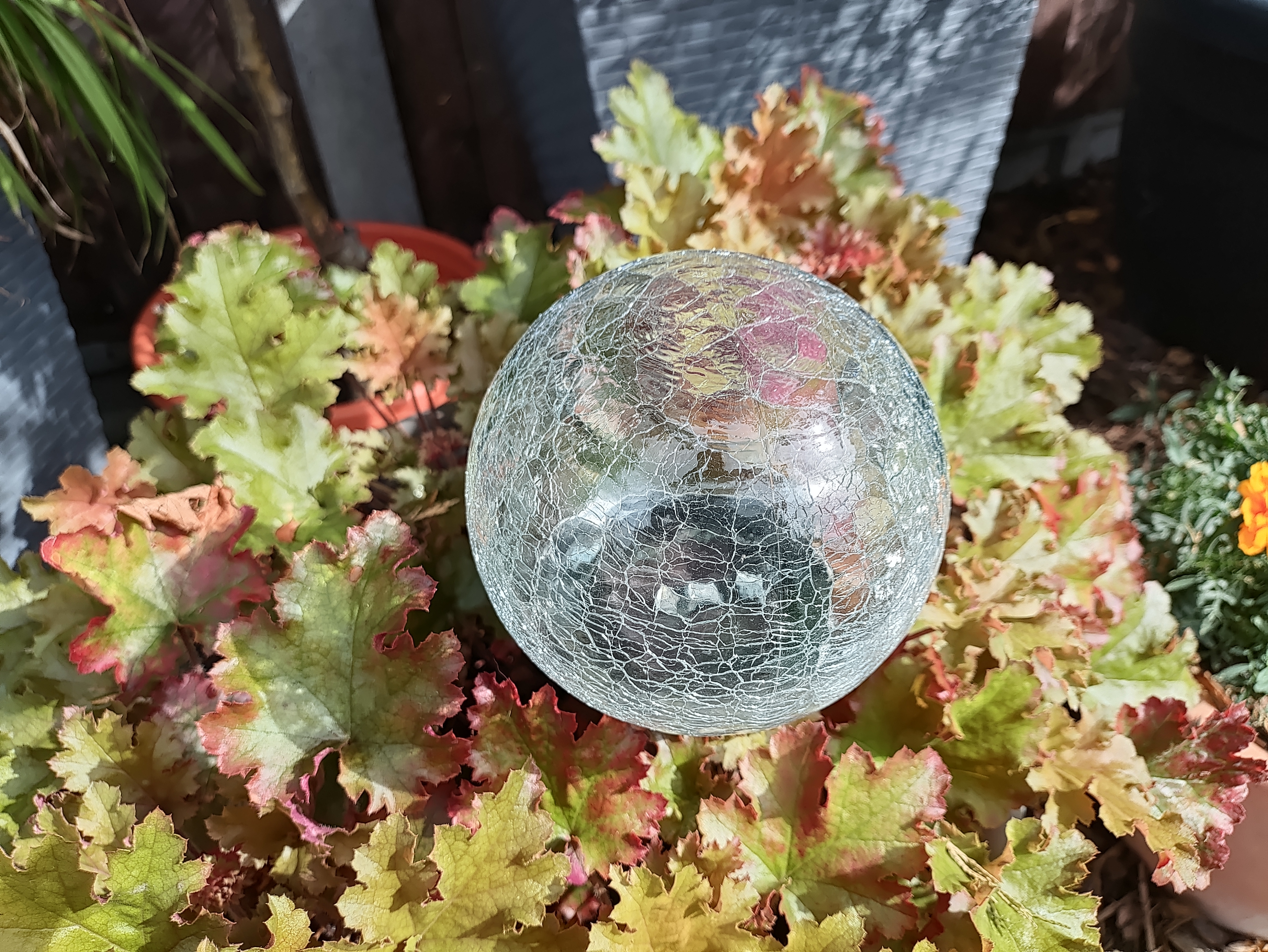


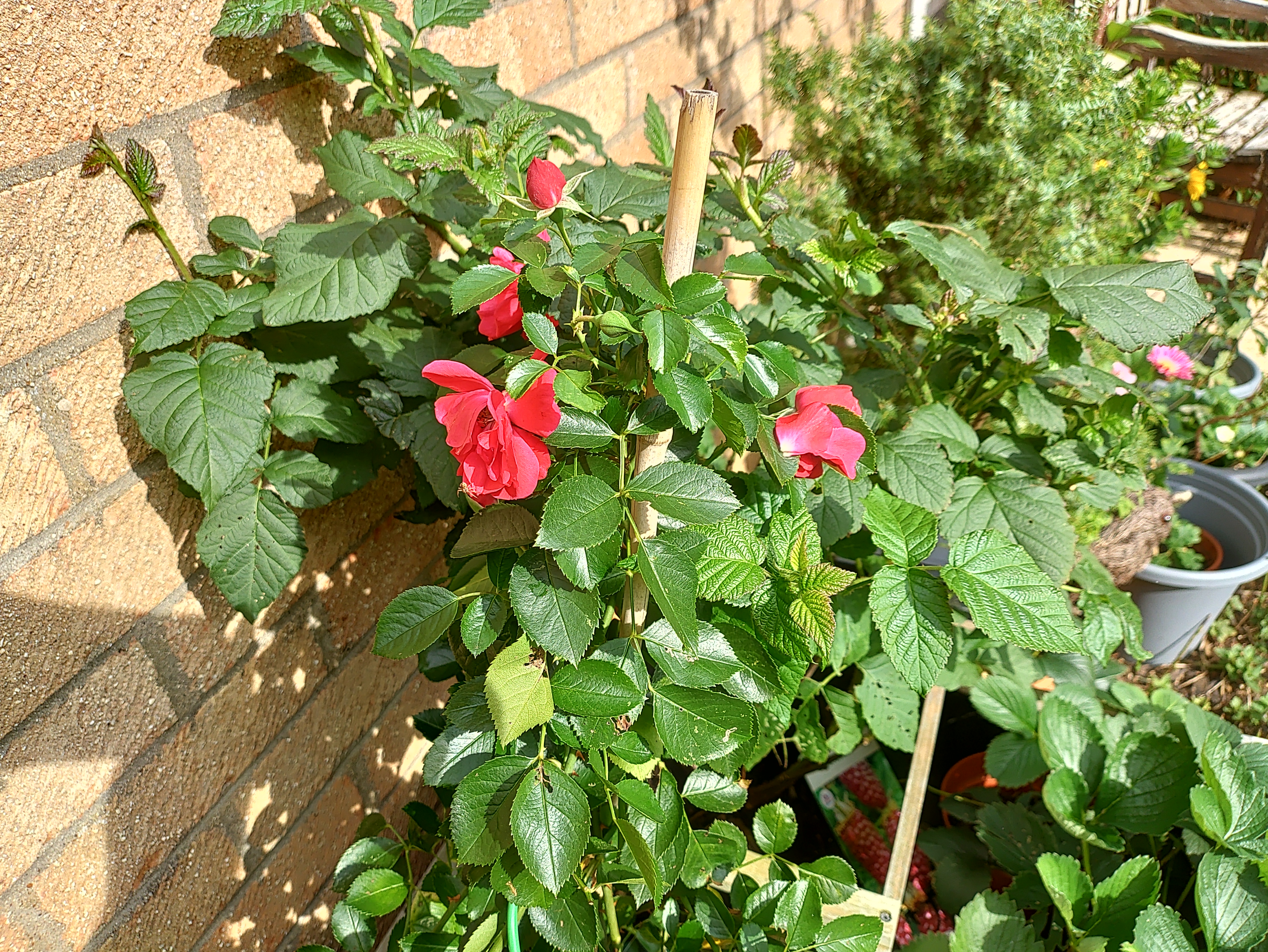

- Camera score: 3.5/5
Kyocera DuraForce Pro 3: performance
- Solid performer
- Limited battery life
This is how the Kyocera DuraForce Pro 3 performed in our suite of benchmark tests:
Geekbench: 790 (single-core); 2756 (multi-core); 2596 (OpenCL)
PCMark (Work 3.0): 9955
PCMark (Battery test): 14 hours and 44 mins
Passmark: 12469
Passmark CPU: 6021
3DMark Slingshot: 6977 (OGL)
3DMark Slingshot Extreme: 5733(OGL); 4913 (Vulkan)
3DMark Wild Life: 3153
In short, the performance of the Snapdragon 7 Gen 1 is excellent, but then it should be.
Some of the Dimensity 1080 powered phones come close to these numbers, but this SoC has the edge in most cases.
The only two rugged phones that we tested recently that are quicker are the AGM G2 Guardian and the Motorola ThinkPhone. The AGM uses a Qualcomm QC6490, and the ThinkPhone has the all-powerful Qualcomm Snapdragon 8+ Gen 1 in its corner.
It’s questionable if this phone needs this much power for the typical jobs it will be doing, but it’s got the horsepower available for local data processing if it is required.
The battery life of 14 hours and 44 minutes is not bad considering the relatively small battery capacity it offers, but it is possible to swap this out and extend the operating life almost indefinitely with further investment.
Overall, there is relatively little to complain about in terms of performance. But those who tend to overload their devices with apps might run into some issues with the amount of RAM and storage that is on offer in the Pro 3.
- Performance score: 4/5
Kyocera DuraForce Pro 3: battery
- Small battery size
- 27W Fast charging
- Battery swap
A total of 4270 mAh doesn’t seem like much capacity, and that’s because it’s the smallest battery we’ve seen in a rugged mobile for a very long time.
The only device with a battery close to this small was the Motorola ThinkPhone, which had 5000 mAh at its disposal.
A typical rugged phone has 7000 mAh, and we’ve seen designs with up to 22000 mAh.
The upside of this device is that with a relatively small battery, it recharges quickly, and with 27W wired charging, it can go from exhaustion to full capacity in less than three hours.
The Qi wireless charging is at 8.1W, but that should still be able to get the Pro 3 fully juiced overnight.
Obviously, with the ability to swap batteries being relatively easy, the operating time of this device is significantly extended. But what these batteries will cost and how you will charge them outside the phone is currently unknown.
What the small battery does for the Pro 3 is to make it substantially more portable than many rugged phones. But unless you carry extra batteries, this isn’t the ideal phone to take on a long hike unless you only turn it on when required.
- Battery score: 4/5

This is a well-specified and built phone that, if a global model existed and it wasn’t locked to a single carrier, might find favour across the world. Or it might, if it wasn’t priced at double what a Chinese brand might ask for a device with a similar capability.
It’s hard not to link the high price and the Verizon exclusivity, but that’s a choice for the customer when considering this product.
One feature that Kyocera makes much of here is that it can have the battery replaced easily. We accept this is a great feature, although Kyocera doesn’t say how much extra batteries cost, and there appears to be no means to charge them away from the phone.
With new EU rules on phone batteries about to bite, where this phone is unusual in having a removable battery, in a few years, this will be a standard phone feature for any devices sold within that market.
Kyocera is asking plenty for this phone; at that price, it needs more RAM and twice the storage. It should also support global 5G and sport better camera sensors. And, it needed to be less aligned to a single carrier.
Kyocera DuraForce Pro 3: score card
| Attributes | Notes | Rating |
|---|---|---|
| Value | At this price, customers expect more. | 2/5 |
| Design | It has a compact design with a swappable battery, but the button layout is confusing. | 4/5 |
| Hardware | Snapdragon SoC, but only 6GB of RAM and 128GB of storage | 4/5 |
| Camera | Camera 64MP main camera that uses pixel binning tech. Great camera app, but the sensors should be better. | 3.5/5 |
| Performance | Same performance as other phones using this SoC | 4/5 |
| Battery | Small battery, but it can be swapped. And, it charges quickly. | 4/5 |
| Overall | Easy to carry and battery-swappable, but tied to Verizon and not a global design. | 4/5 |
Should I buy a Kyocera DuraForce Pro 3 ?
Buy it if...
You are a Verizon customer in the USA
Depending on where in the USA you are based, Verizon might be the carrier of choice, and this phone might make sense. As part of a contract deal, it will be cheaper, and the eSIM function could allow it to handle home and work calls.
You want a pocketable rugged phone
Compared with many rugged phones, this one is relatively small and should fit in most pockets easily. Kyocera makes a belt clip attachment, and the phone isn’t heavy enough to be a problem if you are climbing or moving around.
Don't buy it if...
You have poor Verizon coverage in your area
This phone is sold locked to Verizon. If you want to use it with another US carrier, you will need to wait 60 days before it can be unlocked. Not ideal and not especially customer-friendly for such an expensive device.
You travel or live outside the USA
This phone is not a global design, and it doesn’t support the 5G networks that exist in other regions. And, the phone will moan it can’t activate the phone to the Verizon network since it won’t be able to find it outside America.
Also consider
AGM G2 Guardian
A more powerful phone with a thermal camera and 109dB Loud Speaker. It is the same cost as the Pro 3, but has a 108MP rear camera, 7000 mAh battery, and comes with 8GB of RAM and 256GB storage.
And, critically, it comes in a US T-mobile version, and a rest-of-the-world model.
Read our AGM G2 Guardian review for more information.
Lenovo ThinkPhone by Motorola
Another lightweight rugged design, sold by Lenovo outside the USA and under Motorola branding inside that region.
For the same money as the Pro 3, you get the superior Snapdragon 8+ Gen 1 SoC, 8GB of DDR5 RAM, 256GB storage, a larger screen, a slightly larger battery, better cameras and dual SIMs. The only caveat is that it's only designated as waterproof in fresh water, oddly.
Read our Lenovo ThinkPhone by Motorola review for more information.
We've rated the best business phones.
Mark is an expert on 3D printers, drones and phones. He also covers storage, including SSDs, NAS drives and portable hard drives. He started writing in 1986 and has contributed to MicroMart, PC Format, 3D World, among others.



